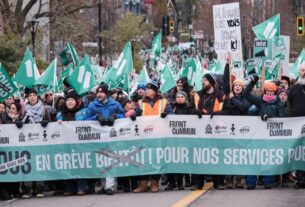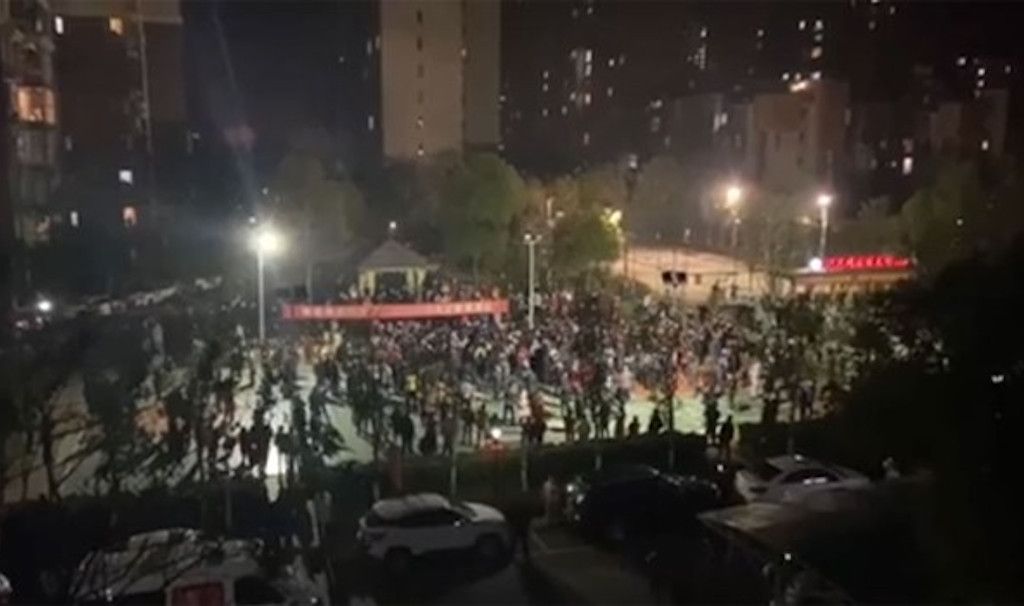Written by former Starbucks workers.
“We don’t need a union. We’re a family here!”
“And you know, I heard at my friend’s cousin’s place that their union was so bad…”
You get used to hearing anti-union talk at most Starbucks these days. Sometimes it’s a manager, other times it’s a shift-lead hoping to be a manager one day. Whenever there’s a quiet moment in the backroom it’s often prodded at. Usually, it’s just a comment about how bad unions are. Other times, they’re more direct; they ask you if you’d actually join a union if given the chance. “Only to make conversation” most assure you, before hurriedly changing the topic to something else if you ask them why. Particular words are used in every conversation: “Family,” “Community,” “Safe Space.” Starbucks, in light of unionization in the United States and worldwide, has tried to project an air of confidence to its remaining un-unionized partners; acting as it’s simply confused as to why unions are popping up! What sort of family needs a union, after all?!
Starbucks is very much afraid. With conditions like theirs, they should be.
Through 2021 and the Spring of 2022, I was a barista with Starbucks while trying to pay my way through university. My store, in particular, was said to be one of the busiest in Western Canada. As such, I believe my experiences can highlight just how much of a delight it is to work at a Starbucks Cafe that’s still not unionized.
“Updates,” directly from head office, are sent out nearly daily and talk about how much the company does for each of us. Coming in each week, you see that each fridge and message board in the backroom is covered in a new array of updates from the head office. Each newsletter, which is required reading for all of us “partners” — because “employee” is too coarse of a word — makes sure to mention how many benefits Starbucks offers and how they outnumber any other cafe or similar business.
A particular program, called the CUP Program, talks about how each partner can chip in a bit of their salary to make sure that other partners can afford to eat this week if they’re in need. Managers proudly bring it up, trying not to think about how it means that a good few of us — even at our own store — have been going hungry because of cut hours.
Take a step onto the cafe floor and it was usually packed. I was a morning barista, often working the 4:30 am shift to about 1:30 pm — “an eight-hour shift means 8 hours on the floor, after all” — and we often had cars wrapped around the block waiting for us to open. To cut costs, management cut one person from the morning team, so we would usually have only about 3 people until about 7 am. In that time, on average, we’d have to make around 100-150 drinks, including mobile orders. As we’d only have one barista on, that unlucky person would have to make around a drink per minute, which would have to be synchronized with food.
At such a fast pace, burns were common. Most people I worked with had scars from either the ovens or from steaming milk. I myself have one on my left arm and along my inner thigh. The first from someone bumping me and singeing my hand on the oven, the other from an irate customer slapping over a drink. A few people told me about genital burns as well; one horror story, in particular, told me to watch out for one manager who made you work until your break — genital burns or not — to keep their metrics high.
Think it’s easier taking orders? Guess again! It wasn’t uncommon for one or two people to be crying from stress in the backroom on the clock. More than a few of my coworkers admitted to crying off the clock as well. Mask restrictions were enforced by us, which meant we’d also be the ones to receive most of the abuse. During my time alone, I was spat at, elbowed, and kicked. Verbal abuse was even more common, and Starbucks often did little about it. At my store, a couple in their fifties had taken to using particular slurs against my South-East Asian and Indigenous co-workers. When it was reported, district management shrugged it off — told us they’d never heard those slurs before and weren’t sure if they were real — and told us to simply get over it.
Those who closed didn’t have it much easier. As Starbucks gets their “partners” to do the janitorial work, those who work the cleaning shift — called “clean play” — often working with harsh chemicals, are required to stay until the job gets done, usually around midnight. Asthma or under-18 status be damned! Oftentimes, we’d have to coordinate around health conditions or disabilities as those weren’t taken into account as far as who could and couldn’t be working with what chemicals.
Some of you who may be reading this may be thinking we ought to have gone to management or shift-leads to complain. This brings us to the final issue: the management and shift-leads often perpetuate abuse. Sometimes this can simply be being forced to work with an injury or to work sick. Other times it’s worse.
Sexual harassment and assault were concerningly common at my own store and at others. While I cannot speak to other victims, as I have no right to share their story, I can speak to how my own sexual harassment was dealt with. After a shift-lead had taken to putting a hand down the hemline of my pants or — if he couldn’t get away with that — holding my waist, I’d decided to, against better judgment, bring it up with management. My manager at the time simply shrugged and told me that she didn’t see it as an issue; that it was just how that shift-lead was and that I’d need to get over it. Until I’d left the store, I’d had to continue to work with that shift-lead and simply live with the fear that I’d be harassed. Like a lot of the working class, I couldn’t afford to miss a paycheque.
Many stores might be better than mine. A multitude of them are probably far worse. What I can say for certain is that if Starbucks really is a “family” and we’re all “partners,” then it’s an abusive relationship. No one deserves to be treated like this.
Fortunately, I was able to leave my job this Spring. Many of my coworkers have not and they deserve better working conditions. Every partner does! Just like our comrades down in Buffalo, we can fight for a better workplace and for more dignity on the job. While I may have left, no worker — at Starbucks or anywhere else — deserves to fear burns, injuries and harassment on or off the clock.
Every Starbucks worker deserves better conditions. Unionizing Starbucks is the way to win a safe and harassment-free workplace, and better pay!




